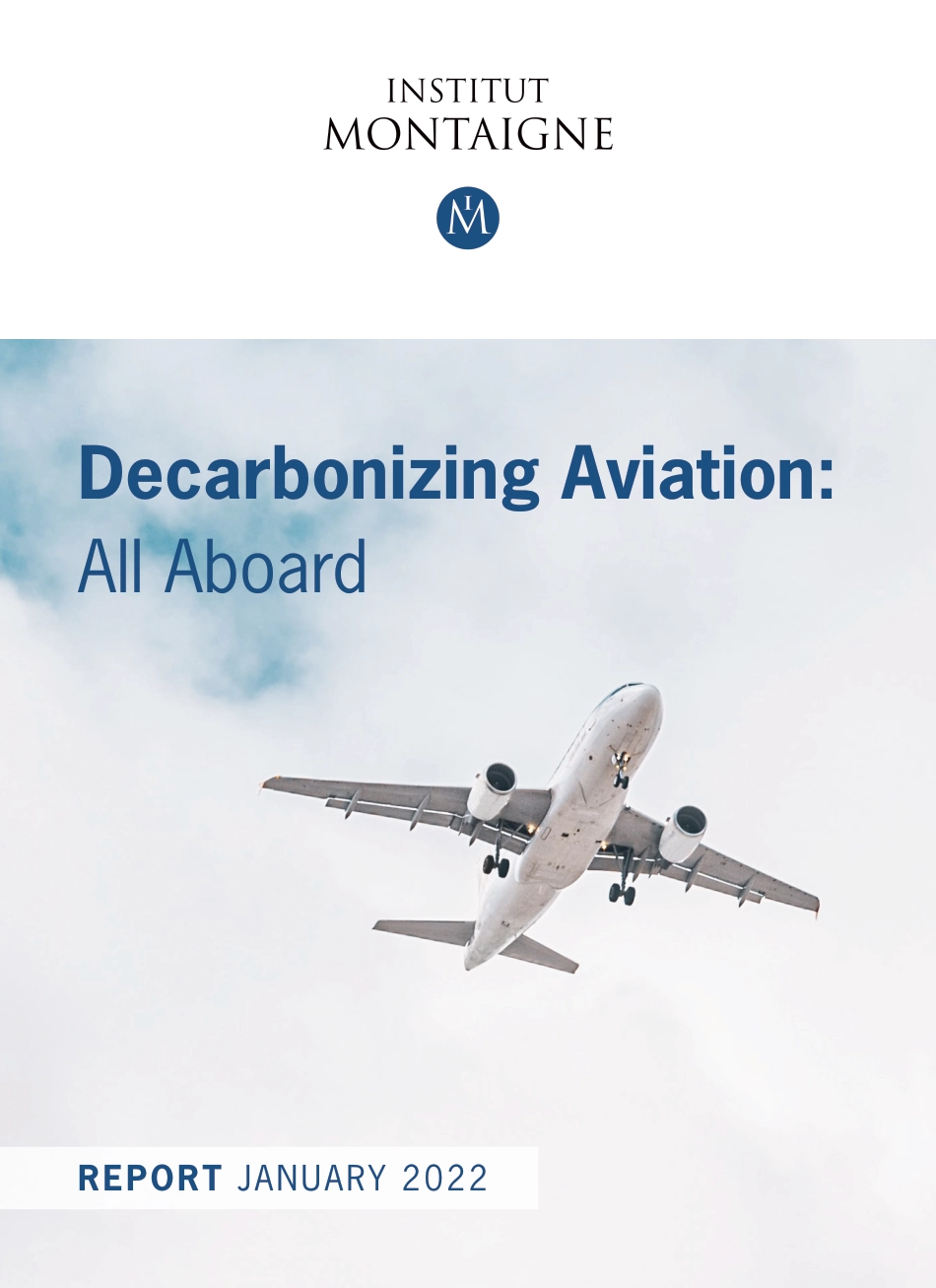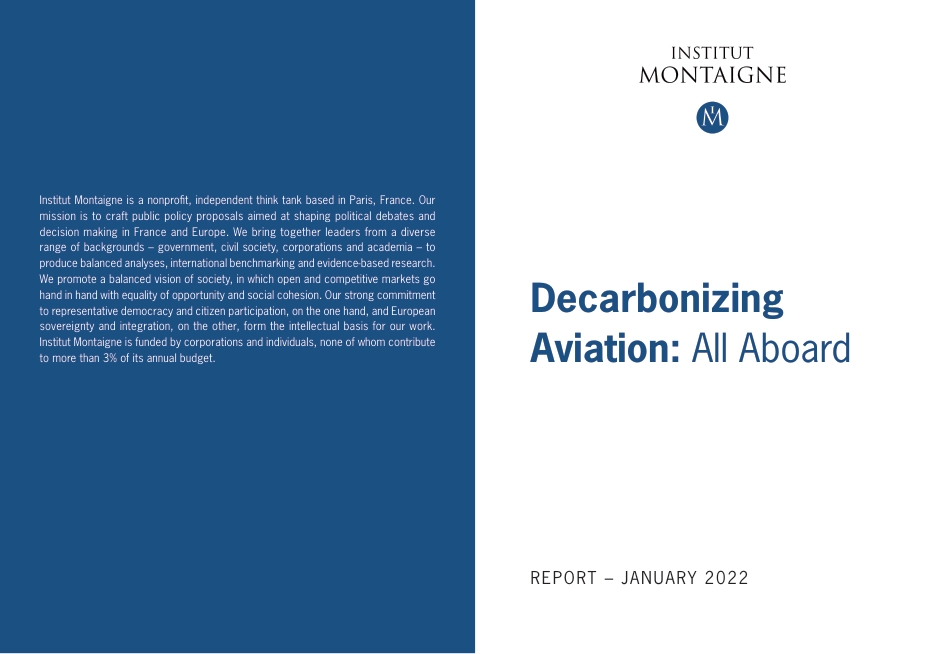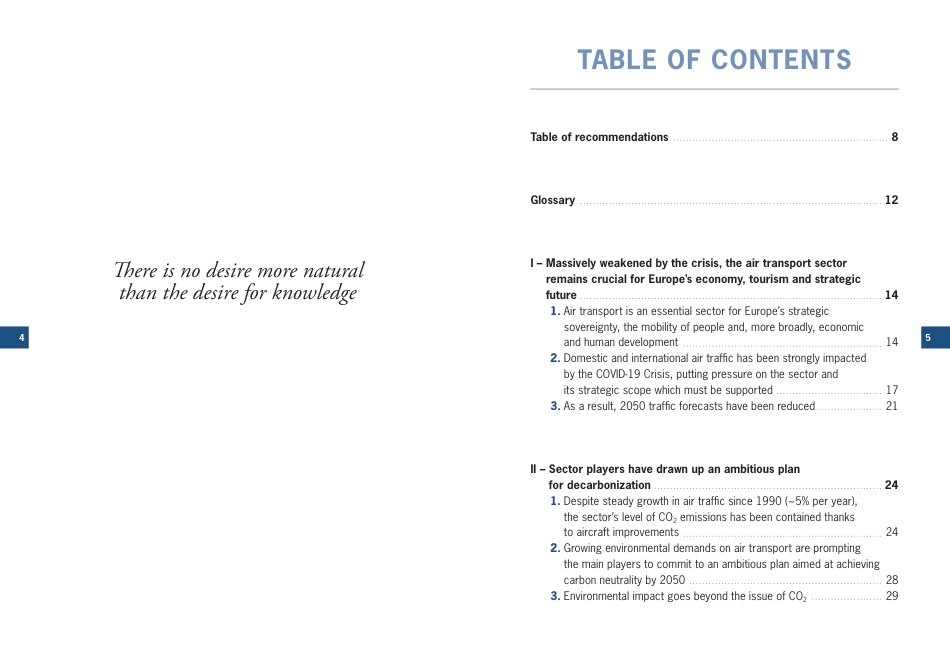Decarbonizing Aviation: All AboardREPORT JANUARY 2022Decarbonizing Aviation: All AboardREPORT – JANUARY 2022Institut Montaigne is a nonprofit, independent think tank based in Paris, France. Our mission is to craft public policy proposals aimed at shaping political debates and decision making in France and Europe. We bring together leaders from a diverse range of backgrounds – government, civil society, corporations and academia – to produce balanced analyses, international benchmarking and evidence-based research. We promote a balanced vision of society, in which open and competitive markets go hand in hand with equality of opportunity and social cohesion. Our strong commitment to representative democracy and citizen participation, on the one hand, and European sovereignty and integration, on the other, form the intellectual basis for our work. Institut Montaigne is funded by corporations and individuals, none of whom contribute to more than 3% of its annual budget.54TABLE OF CONTENTSTable of recommendations . . . . . . . . . . . . . . . . . . . . . . . . . . . . . . . . . . . . . . . . . . . . . . . . . . . . . . . . . . . . . . . . . . . 8Glossary . . . . . . . . . . . . . . . . . . . . . . . . . . . . . . . . . . . . . . . . . . . . . . . . . . . . . . . . . . . . . . . . . . . . . . . . . . . . . . . . . . . . . . . . . . . . . . 12I – Massively weakened by the crisis, the air transport sector remains crucial for Europe’s economy, tourism and strategic future . . . . . . . . . . . . . . . . . . . . . . . . . . . . . . . . . . . . . . . . . . . . . . . . . . . . . . . . . . ....



